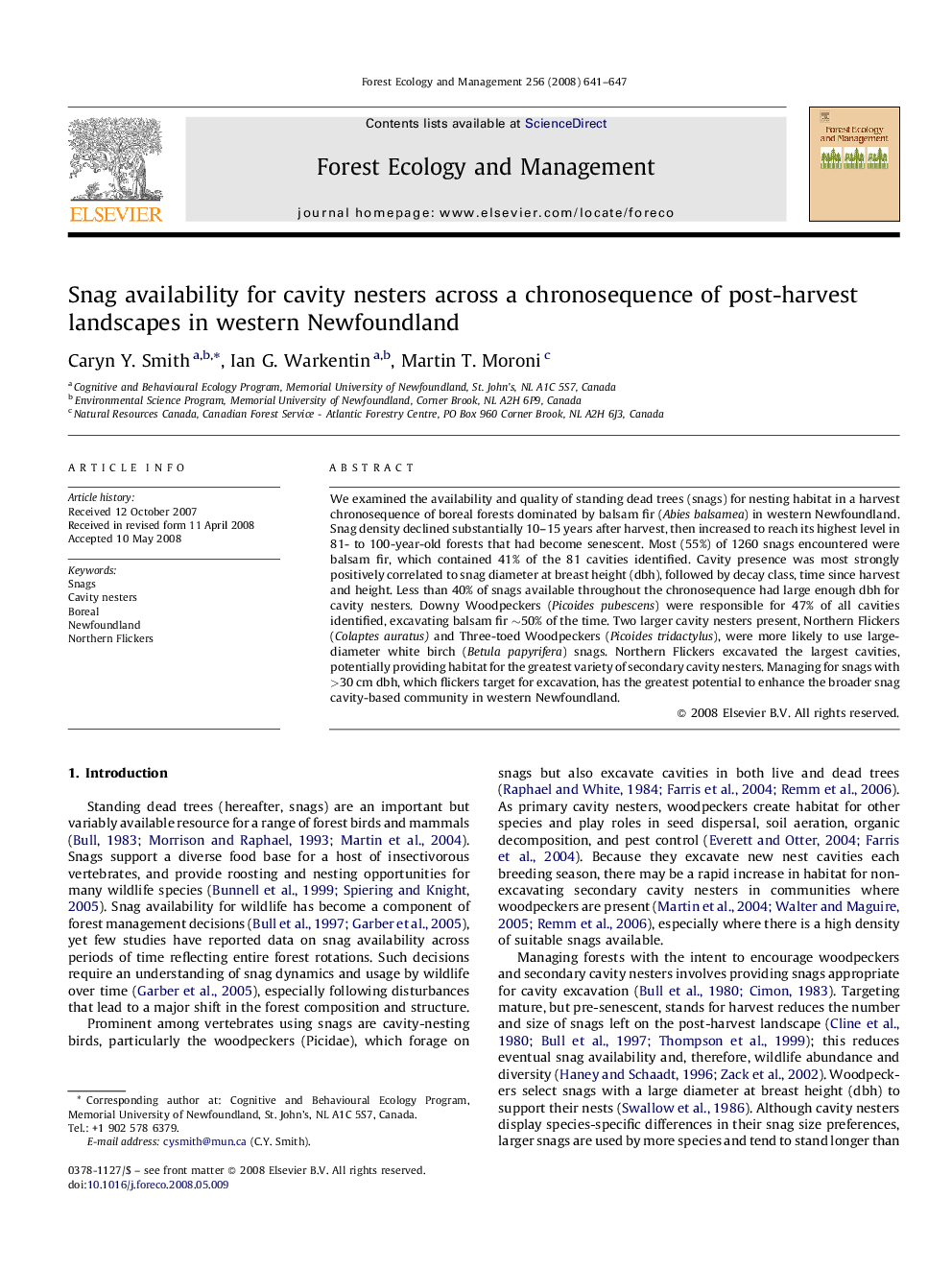| کد مقاله | کد نشریه | سال انتشار | مقاله انگلیسی | نسخه تمام متن |
|---|---|---|---|---|
| 89642 | 159349 | 2008 | 7 صفحه PDF | دانلود رایگان |

We examined the availability and quality of standing dead trees (snags) for nesting habitat in a harvest chronosequence of boreal forests dominated by balsam fir (Abies balsamea) in western Newfoundland. Snag density declined substantially 10–15 years after harvest, then increased to reach its highest level in 81- to 100-year-old forests that had become senescent. Most (55%) of 1260 snags encountered were balsam fir, which contained 41% of the 81 cavities identified. Cavity presence was most strongly positively correlated to snag diameter at breast height (dbh), followed by decay class, time since harvest and height. Less than 40% of snags available throughout the chronosequence had large enough dbh for cavity nesters. Downy Woodpeckers (Picoides pubescens) were responsible for 47% of all cavities identified, excavating balsam fir ∼50% of the time. Two larger cavity nesters present, Northern Flickers (Colaptes auratus) and Three-toed Woodpeckers (Picoides tridactylus), were more likely to use large-diameter white birch (Betula papyrifera) snags. Northern Flickers excavated the largest cavities, potentially providing habitat for the greatest variety of secondary cavity nesters. Managing for snags with >30 cm dbh, which flickers target for excavation, has the greatest potential to enhance the broader snag cavity-based community in western Newfoundland.
Journal: Forest Ecology and Management - Volume 256, Issue 4, 10 August 2008, Pages 641–647